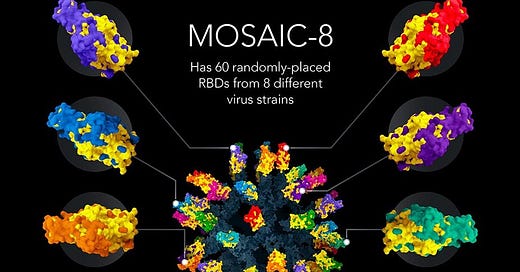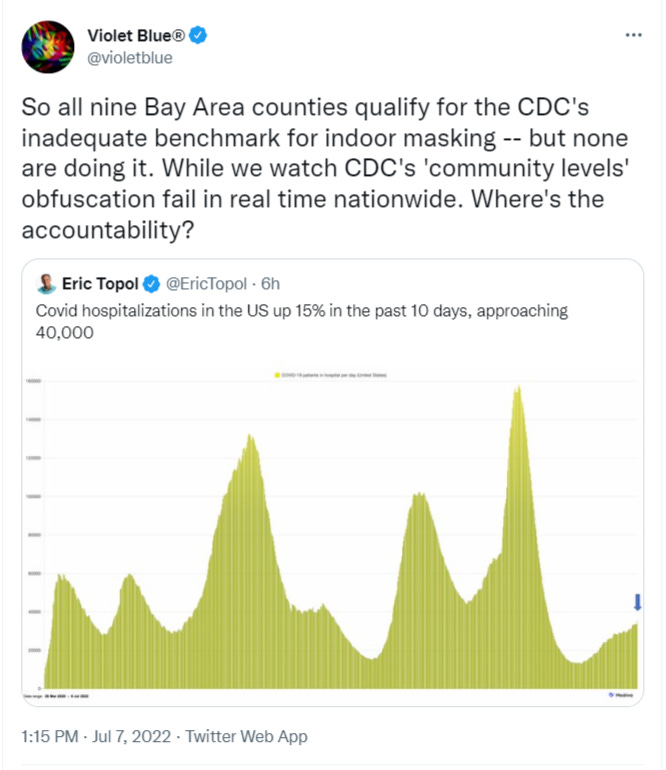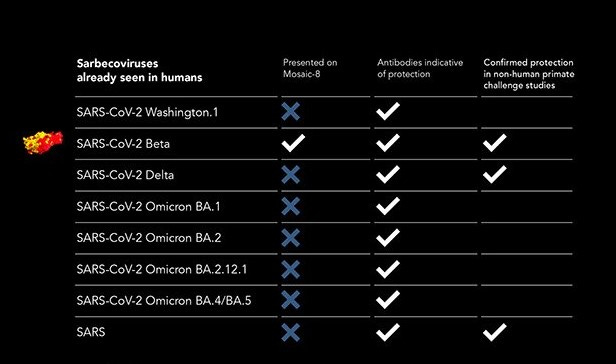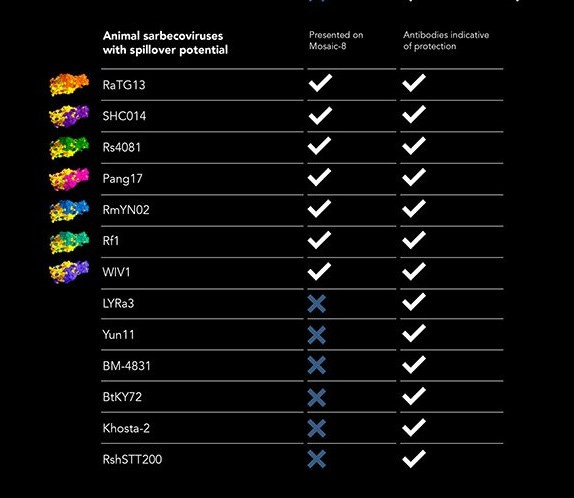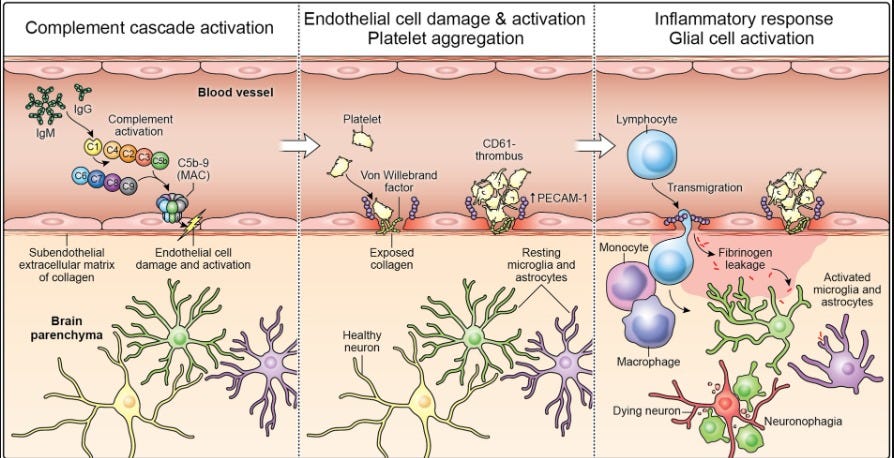COVID news 7/8/22
Hi all,
BA.5 now makes up more than 54% of cases in the United States. In Europe, BA.5 is causing an extremely large number of cases, but it is also causing an increase in hospitalizations. Here in the United States, officially test positivity is now at 18% and hospitalizations have increased this week by 15%. People tested at Walgreens across the country this week showed a test positivity rate of 33% for the entire US and 40% in California. CVS and Walgreens offer testing with no charge so their numbers may be more reliable especially for people who do not have health insurance. There is a lot of virus out there right now. Be careful!
Because of BA.5's extreme immune evasion, our first line of our immune defenses, neutralizing antibodies, don't work well against BA.5 unless there is a very high amount of them. So, booster shots of mRNA vaccines are very important, especially in people over 50 as data shows that boosters decrease severe COVID and death from COVID. Unfortunately, only 1 in 4 people over the age of 50 has gotten their 4th dose booster. Please get the 4th dose booster (or 3rd dose) now if you qualify and don't wait for the fall bivalent booster. A new study from Italy this week shows having more doses of the Pfizer mRNA vaccine decreases your risk of Long COVID. Boosters are important for many reasons.
Reinfections are more common now because of BA.5's immune evasion. In the beginning of the pandemic, there was only about a 1% reinfection rate. With Omicron BA.1, the reinfection rate increased to about 11%. Now with BA.5, 25% of infections are reinfections. People who may have had a COVID infection as recently as 1 to 2 months ago are getting new infections with BA.5. Prior infection with COVID, even with another Omicron variant, does not protect against BA.5. Being reinfected with COVID two, three or more times can increase your risk of Long COVID which can be disabling.
If you live here in California, and specifically in the Bay Area like I do, it is time to go back to wearing masks indoors. Experts like Dr. Bob Wachter of UCSF recommend wearing masks indoors and not eating indoors now because of the high rates of COVID BA.5. Last week, the asymptomatic positive rate at UCSF was 6.5% meaning that 1 in 16 people had COVID and didn't know it. In a room with 50 people, the likelihood of someone having an active COVID infection would be 96% right now. It is safer to go to events outdoors now as long as people are not packed shoulder-to-shoulder like at some outdoor concerts. Wear a mask even if you go inside briefly to pick up a coffee or to use the bathroom. Opening windows and doors even a small amount to provide cross ventilation, using air filters, wearing masks indoors and keeping up to date on your vaccines and boosters help to mitigate the risk of getting COVID.
BA.5 causes symptoms that are more upper respiratory in nature. The most common BA.5 infection symptoms are cough, runny nose, very sore throat that may feel like Strep throat, fatigue, headaches and muscle pains. Some people report sinus pain and I have seen a few reports of symptoms that are meningitis-like (neck pain, headache, fever). If you have meningitis symptoms, you should be evaluated by a health care provider promptly.
BA.2.75 is a new variant that appears to be outcompeting BA.5 in India, although there is not a lot of data yet about it. Looking at the protein structure of BA.2.75, BA.2.75 has 8 more mutations in the spike protein than BA.2 and has 11 mutations that are different from BA.5, many of which are in the N-terminal domain, which are postulated to possibly make immune escape worse. This is all very speculative now and we will have to wait to see what happens with this variant.
And finally, some good news. Caltech's Pamela Bjorkman’s lab has devised a new Mosaic Nanoparticle Vaccine that protects against a variety of SARS-like betacoronaviruses, including all SARS-CoV-2 variants, in mice and monkeys. This vaccine will start Phase I clinical trials in humans soon. The vaccine contains RBDs (receptor binding domains) that are used by coronaviruses to enter human cells. The RBDs from different viruses are placed on the nanoparticle and this stimulates the immune system to make a variety of antibodies to these viruses. The goal is to make an all-in-one vaccine that protects against all SARS-like betacoronaviruses. Also, in hospitalized patients with moderate to severe Covid-19 at high risk for ARDS and death, using a drug called Sabizabulin resulted in a 25% absolute reduction in deaths compared with placebo.
Have a good weekend,
Ruth Ann Crystal MD
Twitter: https://twitter.com/CatchTheBaby
World
United States
US reported cases, but real numbers are much higher:
https://covid.cdc.gov/covid-data-tracker/#variant-proportions
As of 7/5/22 BA.5 is now 53.6% of cases in the United States.
Walgreens COVID-19 Test Positivity Tracker: 32.7% Positivity for the US last week
Walgreens and CVS numbers may be more accurate because they don't charge people for tests.
40.5% Positivity for California at Walgreen’s testing sites:
CDC Wastewater Tracker: https://covid.cdc.gov/covid-data-tracker/#wastewater-surveillance
California wastewater (SCAN): https://soe-wbe-pilot.wl.r.appspot.com/charts
Pandemic Roundup: July 7, 2022 by Violet Blue on Patreon https://buff.ly/3yR6KrQ
7/7/22 California COVID stats from NY Times:
Remember, much fewer cases are reported now because of home antigen tests, so it is harder to compare to earlier waves.
California state dashboard: https://covid19.ca.gov/state-dashboard/#location-california
BA.5 waves in Europe and Australia and New Zealand:
BA.5 wave is causing an increase in hospitalizations:
7/8/22 SF Chronicle: What’s the risk of getting COVID outside? Here’s why new variants may have changed the answer https://buff.ly/3NTV8s7
As California’s COVID test positive rate nears record levels, the risk is higher in nearly all settings. “The chances of being around someone outside or inside who is shedding virus is very high.”
Walking on an isolated hiking trail or a breezy beach is a lot safer than standing shoulder-to-shoulder with celebrants under a tent at a wedding or singing and dancing with fans crammed into an outdoor concert.
7/7/22 NY Times: What to Know About California’s Latest Covid Surge https://buff.ly/3c1e4YA
High numbers of new COVID cases in California are actually higher because home antigen tests are not reported.
Vaccines and boosters, immunity from prior Covid infections and therapeutics such as Paxlovid — reduce the risk of severe disease but don't eliminate it.
Omicron subvariant BA.5 is highly immune evasive and bypasses our immune system’s defenses, even if people have been vaccinated, boosted and already had Covid.
Reinfections will be more common with BA.5.
Experts predict that without tighter rules or behavioral changes, the hyper-transmissibility of BA.5 will lead to a continued surge in cases and a modest increase in hospitalizations and deaths in California.
Bob Wachter MD recommends vaccination, boosters and masking indoors.
In the Bay Area now, 1 in16 people have asymptomatic COVID and don't know it.
"Spend enough time maskless indoors & it’s near-certain that you’ll get it.”
7/7/22 WSJ: Covid-19 Vaccine Doses, Once in High Demand, Now Are Being Thrown Away https://buff.ly/3nNKbhm
Governments, drugmakers and vaccination sites are discarding tens of millions of unused Covid-19 vaccine doses amid sagging demand.
7/6/22 NY Times: What are the symptoms of an infection with BA.4 and BA.5? https://buff.ly/3RiB8lZ
BA.4 and BA.5 symptoms: cough, runny nose, sore throat, fatigue, headaches and muscle pains.
Some patients have painful sinus congestion and severe sore throats that feel like strep throat. Mostly upper respiratory symptoms noted.
Less likely to lose their senses of taste and smell, or to experience shortness of breath, as compared to other variants.
7/6/22 NY Times: U.S. pharmacists receive permission from the F.D.A. to prescribe Pfizer’s Paxlovid Covid pills. https://buff.ly/3nJeyW7
Making it easier for patients to get the drug.
7/8/22 Katelyn Jetelina: Epidemiology of Reinfections https://buff.ly/3yjXafu
Before Omicron, reinfections were only about 1% of cases.
With Omicron BA.1, reinfection rates increased to 11% of all infections.
Right now, reinfections make up about 25% of cases in the U.K. and about 25% in New York this week.
7/8/22 LA Times: Got COVID? Doctors warn against powering through it — even from home — as this can worsen health toll https://buff.ly/3bWGO4W
Working from home can still strain the immune system, worsening the toll of a COVID infection, experts say.
“Sleep equals immunity,” said Dr. Susan Cheng.
Individuals who did not adequately rest had a higher incidence of persistent symptoms” and Long COVID.
Some good news:
7/6/22 CalTech News: Nanoparticle Vaccine Protects Against a Spectrum of COVID-19-causing Variants and Related Viruses https://buff.ly/3NM6crs
Caltech's Pamela Bjorkman’s lab has devised a new Mosaic Nanoparticle Vaccine that protects against a variety of SARS-like betacoronaviruses, including SARS-CoV-2 variants, in mice and monkeys..
"The fact that three betacoronaviruses—SARS-CoV, MERS-CoV, and SARS-CoV-2—have spilled over into humans from animal hosts in the last 20 years illustrates the need for making broadly protective vaccines." - Bjorkman
What we're trying to do is make an all-in-one vaccine protective against SARS-like betacoronaviruses regardless of which animal viruses might evolve to allow human infection and spread. This sort of vaccine would also protect against current and future SARS-CoV-2 variants without the need for updating."
The vaccine contains RBDs (receptor binding domains) that are used by coronaviruses to enter human cells. The RBDs from different viruses are placed on the nanoparticle and this stimulates the immune system to make a variety of antibodies to these viruses..
As a next step, Bjorkman and colleagues will evaluate the mosaic-8 nanoparticle immunizations in humans in a Phase 1 clinical trial supported by the Coalition for Epidemic Preparedness Initiative (CEPI).
7/6/22 Bjorkman’s publication in Science: Mosaic RBD nanoparticles protect against challenge by diverse sarbecoviruses in animal models https://buff.ly/3IpZoyr
7/8/22 NEJM: Oral Sabizabulin for High-Risk, Hospitalized Adults with Covid-19: Interim Analysis https://buff.ly/3In3APq
Sabizabulin is an oral, novel microtubule disruptor that has dual antiviral and anti-inflammatory activities in preclinical models.
Sabizabulin treatment resulted in a 24.9% absolute reduction in deaths compared with placebo in hospitalized patients with moderate to severe Covid-19 at high risk for ARDS and death, with a lower incidence of adverse and serious adverse events compared with placebo.
7/6/22 Brain: Neurovascular injury with complement activation and inflammation in COVID-19 https://buff.ly/3bNiTEZ
n = 9 people who died from brief COVID infections in 2020
Autopsy shows SARS-CoV-2 infection affects the brain indirectly.
Antibodies produced in response to COVID-19 may mistakenly target endothelial cells essential to the blood-brain barrier, causing vascular leakage, platelet aggregation and clot formation, neuroinflammation and neuronal injury in the brain.
Therapeutic modalities directed against immune complexes should be considered.
7/5/22 JAMA: Leading Causes of Death in the US During the COVID-19 Pandemic, March 2020 to October 2021 https://buff.ly/3Auip0D
In 2020 and 2021, COVID was the 3rd leading cause for death in the U.S.
In 2021, it was the #1 cause of death in Americans age 45-54.
7/5/22 Dr. Peter Hotez on the BA5 sub-variant:
"The numbers are going up precipitously ... it [BA.5] is the most highly transmissible one we've seen to date ... now we're up around something that's close to measles, which is the most common transmissible infectious agent we know about."
7/5/22 AJOG: Assessment of SARS-CoV-2 serostatus and hypertensive disorders of pregnancy (HDP) https://buff.ly/3RbiY5w
Unexpectedly, there was no association between SARS-CoV-2 infection and HDP, according to this prospective cohort study.
COVID-19 severity did not affect the risk of HDP either.
“COVID in pregnancy has many risks for maternal and fetal health, but it is not clear that preeclampsia is one of those risks,” Triebwasser said, according to Healio.
7/3/22 BA.2.75 vs. BA.5 structural differences thread by Ulrich Elling
Ulrich Elling says that this is a “highly speculative” thread.
The basis for concern about the Omicron BA.2.75 variant:
BA.2.75 has 11 mutations beyond BA.5, many in the N-terminal domain, which could make immune escape worse than what we’re seeing now.
BA.2.75 is outcompeting BA.5 in India.
Not a lot of data points reported from India.
There are 11 distinct mutations between BA.5 and BA.2.75 which may allow for another wave of infection for which prior BA.5 immunity may not be protective.
BA.2.75 has 8 additional spike mutations which is a lot.
Delta had 8 mutations in the spike protein in total.
BA.5 has 3 specific mutations and has outcompeted prior variants.
What Mutations are found in BA.2.75?
BA.2.75 is BA.2 with 8 additional spike protein mutations: 147E, 152R, 157L, 210V, 257S, 339H, 446S, 460K.
BA.5 has just 3 mutations in the spike protein: del69/70, 452R, 486V.
7/3/22 Bob Wachter MD Twitter thread on BA.5
Dr Wachter recommends reading Dr. Topol’s article The BA.5 Story
It’s harder to calculate case rates now because people are testing at home.
UCSF asymptomatic positive rate is up to 6.5% meaning:
1 in 16 people, who feel fine, but actually have Covid.
If 6.5% of an asymptomatic population has Covid, in a crowd of 50 people, there’s a 96% probability that someone there is positive.
Vaccines (even with 2 boosters) and/or prior infection now offer relatively little protection against infection, although they still remain enormously protective against severe infection & death.
In fact, this is one of the biggest implications of BA.5:
A prior infection – including an Omicron infection as recent as last month – no longer provides robust protection from reinfection with BA.5.
Hybrid immunity (vaccine + prior infection) used to give “immunity superpower”. But with Omicron, that is no longer true. We’re seeing such folks get reinfected within 1-2 months.
Analogously, booster #1 offers relatively little protection against infection.
2nd booster’s protective effect against infection seems to wane in about 2 months.
See: Protection by a Fourth Dose of BNT162b2 against Omicron in Israel | NEJM https://buff.ly/3jdYA3T
Many ask: “Shouldn’t I wait on boost #2 until fall, when a new bivalent (combo of original & Omicron-specific boost) is available?
For those over age 50, I’d say no – there's too much Covid around and evidence of benefit from boost #2 is persuasive.
Vaccination and boosters remain hugely valuable in preventing a severe case that might lead to hospital/death.But its value in preventing a case of Covid, or preventing transmission, is now far less than it once was.
This means that to gather indoors safely, a vax/booster requirement – while better than nothing – isn't very reassuring.
To do indoor gatherings safely, it’s really about good masking (& no indoor eating) and ventilation; adding pre-event rapid testing offers additional protection.
Immune Imprinting and future SARS-CoV-2 vaccine design:
7/2/22 FT: Covid vaccines: How can immune imprinting (antigenic sin) help experts to rethink jabs? https://buff.ly/3yj44le
More than two years into the pandemic, people have acquired different levels of immunity through infections and shots.
“Our first encounter with the spike antigen, either through infection or vaccination, shapes our subsequent pattern of immunity through immune imprinting".
“Due to immune imprinting, patterns of anti-spike immunity in different people and populations have become heterogeneous, complex and unpredictable,” said Prof. Rosemary Boyton.
Omicron infection had little or no beneficial effect of boosting any part of the immune system — antibodies, B-cells or T-cells — among people who had been imprinted with earlier Sars-Cov-2 variants.
A surge in Covid-19 hospital admissions from BA.5, accompanied by the inability of vaccines to prevent reinfection, has prompted health policymakers to rethink their approach to boosters.
Article from 2 weeks ago on immune imprinting:
6/14/22 Science article: Immune boosting by B.1.1.529 (Omicron) depends on previous SARS-CoV-2 exposure https://buff.ly/3xqknMA
7/3/22 Healio: Statin use for CVD may lower risk for COVID-19 hospitalizations, deaths https://buff.ly/3uu3zno
Statin users had a 16% reduced risk for COVID hospitalizations compared with nonusers (adjusted HR = 0.84).
atorvastatin aHR = 0.89
fluvastatin aHR = 0.75
Beneficial effects of statins as anti-inflammatory, immune-modulatory and anticoagulant agents
7/2/22 JAMA (Italy): Increased number of Pfizer BNT162b2 Vaccination Doses Protects Against Long COVID After Infections Not Requiring Hospitalization in Health Care Workers https://buff.ly/3bMjsik
Long Covid was less likely in healthcare workers who had 2 or 3 mRNA vaccine doses compared with those who weren't vaccinated, according to a small observational study.
N = 739 healthcare workers with COVID-19 infections not requiring hospitalization of which 229 (31%) had Long COVID.
The prevalence of long COVID varied across the pandemic waves:
48.1% in wave 1 (Original virus)
35.9% in wave 2 (Alpha)
16.5% in wave 3 (Delta and Omicron).
The number of vaccine doses was associated with lower long COVID prevalence:
41.8% in unvaccinated patients
30.0% with 1 dose
17.4% with 2 doses
16.0% with 3 doses
Older age, higher body mass index, allergies, and obstructive lung disease were associated with Long COVID.
7/2/22 Lancet preprint: Pfizer BNT162b2 Effectiveness and Durability Against BA.1 and BA.2 Hospital and Emergency Department Admissions in a Large US Health System (Kaiser So Cal): A Test-Negative Design https://buff.ly/3ygEDAF
Two doses of Pfizer BNT162b2 provided only limited protection against BA.1- and BA.2-related hospital and ED admission, which underscores the need for booster doses against Omicron.
While three doses of current vaccines continue to offer high levels of protection (>70%) against BA.1- and BA.2-related hospitalization, variant adapted vaccines are likely needed to improve protection against less severe endpoints like ED admission, especially for BA.2.
7/2/22 NPR: Coronavirus FAQ: Got any tips on improving indoor air flow to reduce infection risks?
Clean air – via ventilation (i.e. fresh air flow via open windows and doors) and filtration (removing particles from the air with a filtering device) — is really important for preventing COVID and other respiratory illnesses.
Open windows and doors even a small amount, cross ventilation, and HVAC MERV-13 filters are very helpful.
The Corsi-Rosenthal box is a DIY, very low-cost way to filter indoor air.
6/29/22 NEJM: Duration of Shedding of Culturable Virus in SARS-CoV-2 Omicron (BA.1) Infection https://buff.ly/3c1cQMY
Duration of shedding of culturable virus for Omicron is longer than for Delta (8 days vs 6 days median).
Consider bringing your Snackle Box to the beach this week as you avoid being indoors.
